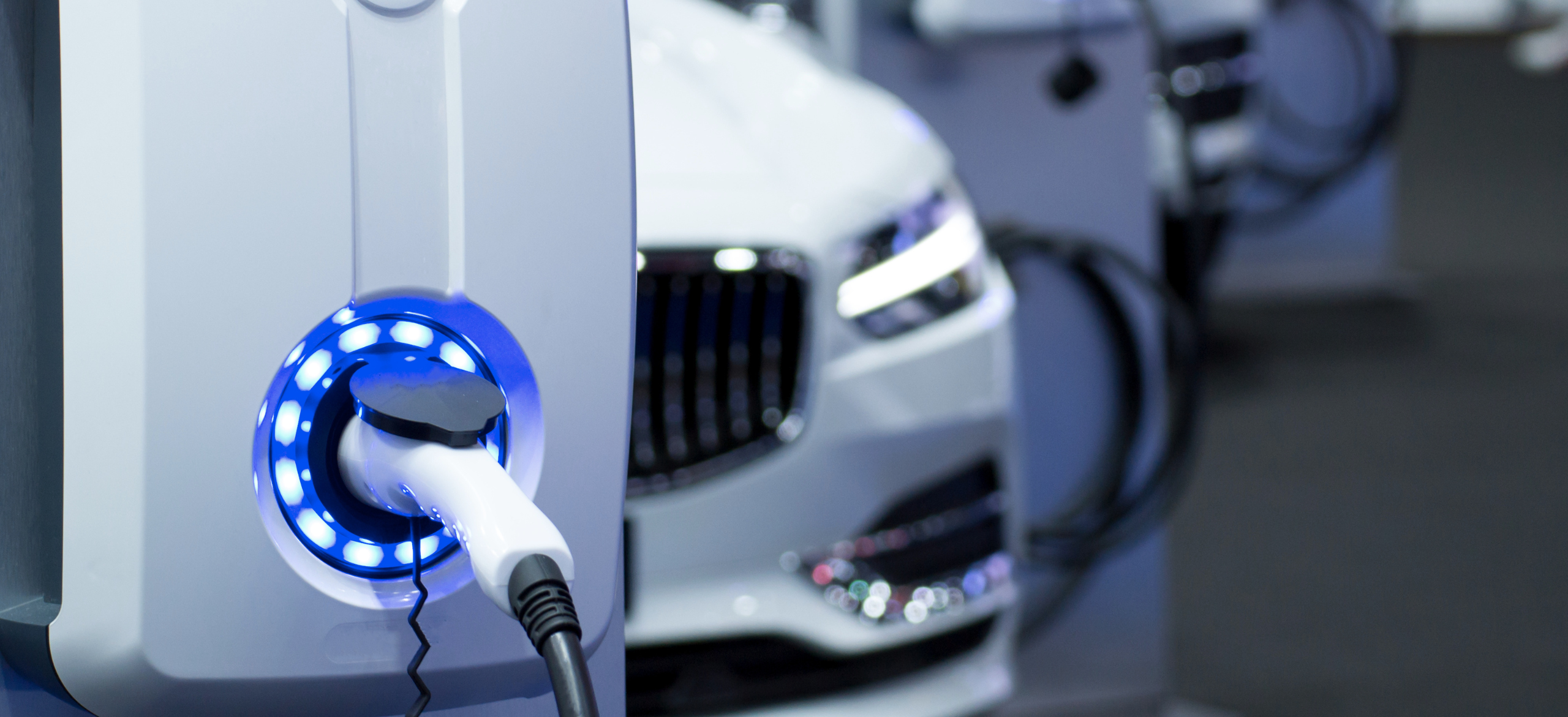As environmental regulations concerning greenhouse gasses (GHGs) increase worldwide, the emphasis on “zero-emissions” vehicles and equipment grows. For example, California’s law banning the sale of new gas- and diesel-powered lawn equipment starting in 2024 specifically refers to “zero-emission small off-road equipment operations” in its digest.
However, this term can be somewhat vague and misleading. To clear up confusion, the article below examines the zero-emission meaning, along with two types of zero-emissions vehicles, their operational considerations, and benefits.
What is Zero-Emissions?
Zero-emissions vehicles earn this description by eliminating GHGs produced from their operation. Specifically, they must be powered by batteries or hydrogen fuel cells, as these are the only energy technologies capable of eliminating operation emissions. Batteries do not emit any GHGs during use, and unlike some other alternative fuels, hydrogen consumed by fuel cell vehicles (FCVs) only produces water as a byproduct.
One confusing aspect about this term is that achieving true zero emissions is technically impossible. Between manufacturing, transportation, and disposal, all vehicles and equipment made with current processes unavoidably result in some emissions. In light of this, zero-emissions vehicles could be considered low-emissions vehicles—although the terminology is already being set into legislation.
Achieving Zero Emissions for Refueling
Refueling and recharging further complicate “zero emissions” labels. This is because if the energy used to power vehicles and equipment generates substantial emissions, then the party responsible for releasing GHGs merely shuffles around.
For example, the US, China, and India still operate over 1500 coal-consuming power plants. And although innovations have achieved sustainable processes for hydrogen production, emissions from energy generation remain an issue.
Hydrogen production still accounts for 2.2% of all emissions worldwide. This is because hydrogen is produced with various methods, but only electrolysis (i.e., separating hydrogen from water molecules via electricity) powered by renewable energy sources (e.g., solar, wind) eliminates emissions during the process. Yet in the US, 95% of hydrogen is produced using other means (e.g., steam methane reforming) that emit significant amounts of GHGs.
For vehicles and equipment to be considered truly “zero emissions” during operation, the energy they consume must be generated with renewable methods.
Battery Power and Hydrogen Fuel Cells
Battery-powered electric vehicles and hydrogen fuel cell vehicles resemble each other more than many realize. Regarding their operation, both effectively rely on battery power.
Although hydrogen is pumped into FCVs like conventional gas and diesel, that hydrogen isn’t burned in an internal combustion engine. Instead, it maintains energy levels in the battery powering the vehicle by subjecting the hydrogen to an electrochemical process.
Ultimately, the biggest difference between these two types of zero-emissions vehicles for most operators is the recharging or refueling processes. Battery-powered vehicles recharge a larger battery directly with electricity provided by a power source, whereas FCVs involve pumping a full tank of hydrogen.
Hydrogen Fuel Cell Vehicle and Equipment—Advantages and Disadvantages
Hydrogen FCV’s primary advantages, aside from emissions, are convenience and application. Since operators merely refill the fuel tank as they would with conventional gas and diesel, they’re already familiar with the process and criticisms of electric vehicles’ recharging times are eliminated. And one of the biggest advantages hydrogen fuel technology offers is transitioning larger commercial and industrial vehicles away from fossil fuels.
Battery power, size, and weight all remain challenges when attempting to electrify vehicles such as semi-trucks used for long-haul transportation. But with hydrogen fuel, these vehicles can operate much as they do now—refilling as needed and without issue. Hydrogen likely represents the best path toward sustainability for some of the largest and most power-consuming applications.
Challenges of Adopting Hydrogen FCVs
However, hydrogen fuel currently faces challenges regarding cost and availability. Experts project that the price of hydrogen fuel must fall by 50% to enable broad market adoption, and their estimates don’t envision this happening until closer to 2030.
And hydrogen-powered vehicles and equipment’s most glaring disadvantage remains the scarce availability of refueling stations. For example, most US hydrogen stations are concentrated in California. More hydrogen fueling stations are being built, but infrastructure lags behind battery charging stations (which remains one of the more common criticisms for electric vehicles).
Most operators cannot take advantage of hydrogen fuel and zero-emission FCVs until access increases and prices fall. So although there’s reason for optimism, celebrations over hydrogen’s widespread and long-term adoption as a primary alternative fuel remain premature.
Battery-Powered Vehicle and Equipment—Advantages and Disadvantages
Many of the advantages battery-powered electric vehicles achieve are already common knowledge. For instance:
- Electrification minimizes environmental and health impacts related to emissions.
- The adoption of solar, wind, and other renewable generative sources continues to grow, helping achieve true zero-emissions operations.
- No additional generation or refinement is needed to produce the energy (as with hydrogen and conventional fuels).
- With fixed or “home” locations, power for recharge remains readily available.
- Electric vehicles achieve a lower total cost of ownership compared to internal combustion engines thanks to reduced maintenance and consumables (e.g., oil).
- Electric drive provides instantaneous access to full power (e.g., flat torque curves vs. “power bands.”
But one of the biggest advantages of battery-powered vehicles has been more than thirty years in the making. Whereas experts continue to hope hydrogen prices fall as projected, lithium prices have been plummeting for decades. Since 1991, lithium has achieved a 97% cost reduction. This development has been revolutionary given how essential this element is for producing more robust, longer-lasting, more powerful, and compact batteries.
And more battery developments remain ongoing. For example, recent improvements in lithium iron phosphate (LFP) battery chemistries may lead to shifts away from more expensive and less environmentally friendly nickel manganese and cobalt (NMC) chemistries commonly used for EVS.
Battery Recharging Infrastructure
Another similarity between battery-powered and FCV vehicles is access to replenishing energy. For use cases when the vehicles and equipment operate at fixed locations or return to the same location after shorter trips (e.g., consumers’ homes, warehouses), this isn’t a problem. But recharging in the middle of trips still presents a challenge.
However, access challenges will certainly be resolved faster than for hydrogen FCVs, given the widespread adoption of electric vehicles among consumers and fleets. Governments worldwide have already begun making substantial investments in charging infrastructure, such as:
- The US’s Bipartisan Infrastructure Bill allocates $7.5 billion toward EV charging networks.
- China currently maintains a significant lead over other countries’ charging networks, building 650,000 in 2022 alone.
- Germany has pledged a €1.8 billion investment in charging infrastructure.
Two Choices for Zero-Emissions Vehicles
OEMs and their customers are currently restricted to battery-powered electric vehicles and hydrogen-powered fuel cell vehicles for achieving zero-emissions operation. But while hydrogen fuel technologies have improved and may be more suited for some specific applications, overall development, investment, and adoption lag behind batteries.
Hydrogen remains something to watch for in the future, while batteries continue to make substantial impacts today.
How Delta-Q Can Help
For OEMs looking to achieve zero emissions today with electric drive, finding the right suppliers that work cohesively is critical to avoid any component failures. Delta-Q Technologies specializes in battery charging solutions and is part of the ZAPI GROUP of companies, which is a full-solution supplier. With its network of partners, the company can provide details and expertise on other electric drive components required to successfully build and launch an effective electric machine, like batteries, motors and controllers.
With the right guidance, OEMs and ICE manufacturers can build an electric solution that meets cost goals, complies with tightening environmental standards, and offers better flexibility and longevity than traditional gas or diesel options. Also, given that OEMs’ customers will be transitioning from the gas- and diesel-powered internal combustion engines they’re long used to, it’s paramount that the electric experience is beloved by operators for performance, reliability, and ease of use.





